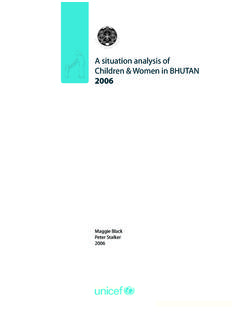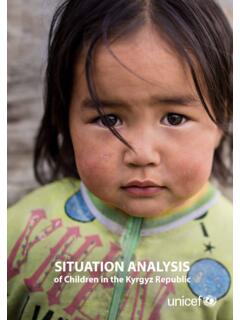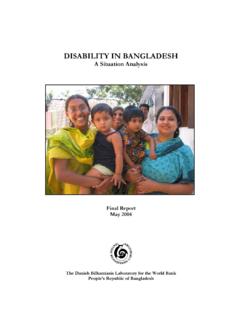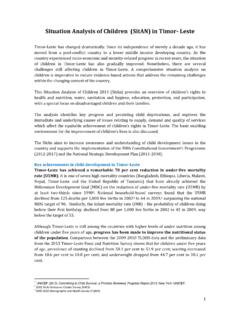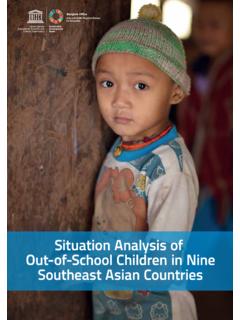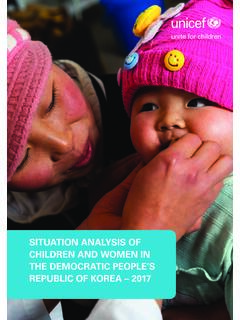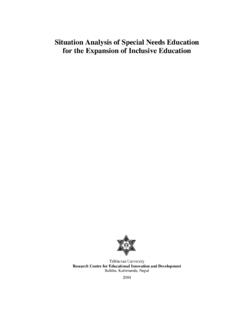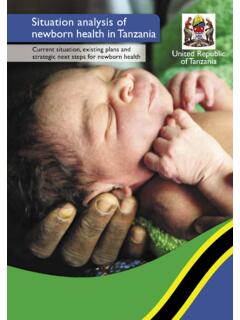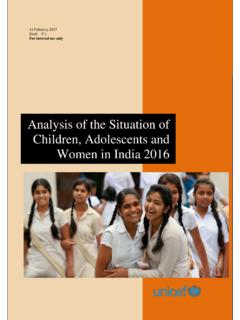Transcription of Situation analysis of child maltreatment prevention in Latvia
1 YSituation analysis of child maltreatment prevention in LatviaSituation analysis of child maltreatment prevention in LatviaBy: Aivita Putni a & Alise Skrasti aAbstractThis Situation analysis report on prevention of child maltreatment in Latvia has been prepared with the cooperation of many stakeholders from different ministries, such as justice, welfare and health, agencies such as child protection, ombudsman and police, and nongovernmental organizations. Studies conducted in Latvia suggest that many children needlessly suffer from child maltreatment . As in other countries, most maltreatment occurs in the family and may not come to the attention of child protection agencies. It is nevertheless a grave public health and societal problem with far-reaching consequences for the mental, physical and reproductive health of children, and for societal development.
2 This analysis found that while good progress is being made in availability of rehabilitation services, there is room for improvement in early prevention measures and data collection. Collaborative actions are required among all partners to tackle this public health and societal problem. This includes better information exchange and collaboration among stakeholders, improved detection and child -centred responses, enforcement of laws and social marketing to change attitudes to corporal punishment, and support to families in need. Health systems have a key role to play, not only in providing high-quality services for children who experience violence, but also in detecting and supporting families at risk and implementing prevention programmes, such as home visitation and parenting support.
3 One way of ensuring this is to strengthen national policy on the prevention of child maltreatment , providing early and targeted support to all children and their child ABUSE - prevention AND CONTROLVIOLENCE - prevention AND CONTROLPUBLIC HEALTHHEALTH POLICYNATIONAL HEALTH PROGRAMSLATVIA World Health Organization 2018 All rights reserved. The Regional Office for Europe of the World Health Organization welcomes requests for permission to reproduce or translate its publications, in part or in designations employed and the presentation of the material in this publication do not imply the expression of any opinion whatsoever on the part of the World Health Organization concerning the legal status of any country, territory, city or area or of its authorities, or concerning the delimitation of its frontiers or boundaries.
4 Dotted lines on maps represent approximate border lines for which there may not yet be full mention of specific companies or of certain manufacturers products does not imply that they are endorsed or recommended by the World Health Organization in preference to others of a similar nature that are not mentioned. Errors and omissions excepted, the names of proprietary products are distinguished by initial capital reasonable precautions have been taken by the World Health Organization to verify the information contained in this publication. However, the published material is being distributed without warranty of any kind, either express or implied. The responsibility for the interpretation and use of the material lies with the reader. In no event shall the World Health Organization be liable for damages arising from its use.
5 The views expressed by authors, editors, or expert groups do not necessarily represent the decisions or the stated policy of the World Health requests about publications of the WHO Regional Office for Europe to:PublicationsWHO Regional Office for EuropeUN City, Marmorvej 51DK-2100 Copenhagen , DenmarkAlternatively, complete an online request form for documentation, health information, or for permission to quote or translate, on the Regional Office website ( ).iiiContentsAcknowledgements ivIntroduction 1 The scope of the report 21. The scope of child maltreatment : providing data Survey data Administrative data A way forward 122. National legal and policy framework Defining policies Cross-sectoral collaboration The role of the health sector in early detection of child maltreatment and mental health problems Priorities and challenges in preventing child maltreatment A way forward 263.
6 prevention programmes Positive parenting and disciplining of children Early risk-detection and support system Education programmes Information campaigns A way forward 31 Conclusions and recommendations 33 References 35ivAcknowledgementsThis report was developed within the framework of the WHO Country Office in Latvia /WHO Regional Office for Europe Biennial Collaborative Agreement 2016/2017 with the Ministry of Health of report was written by Associate Professor Aivita Putni a (University of Latvia ) and Ms Alise Skrasti a (University of Latvia ). Preparation of the report was supported by the Ministry of Health and Ministry of Welfare of authors wish to thank the following peer reviewers who contributed to improving the quality of the report: Ms Dimitrinka Jordanova Peshevska, WHO Consultant in Violence prevention , Skopje, the former Yugolsav Republic of Macedonia; Ms Jenny Gray, WHO Consultant in child Abuse prevention , London, United Kingdom; Dr Dinesh Sethi, Programme Manager, Violence and Injury prevention , and Dr Yongjie Yon, Technical Officer, WHO Regional Office for Europe; and Dr Freja Ulvestad Karki, Senior Policy Adviser, Norwegian Directorate of Health.
7 Exceptional thanks go to key stakeholders who kindly contributed to the document by participating in the semi-structured interviews and shared their knowledge, experience and commitment in the area of prevention of child maltreatment , and to SOS Children s Villages Latvia for allowing use of their research data on intersectoral collaboration in violence thanks go to Dr Aiga R r ne, Head of the WHO Country Office in Latvia , and Dr Gauden Galea, Director, Division of Noncommunicable Diseases and Promoting Health through the Life-course, WHO Regional Office for Europe, for their contributions to the report and supportive comments. 1 IntroductionThis report follows the WHO line of inquiry on the relationship between health and violence and subsequent policy documents tackling child maltreatment and health in Latvia .
8 WHO defines child maltreatment as (1):all forms of physical and/or emotional ill-treatment, sexual abuse, neglect or negligent treatment or commercial or other exploitation, resulting in actual or potential harm to the child s health, survival, development or dignity in the context of a relationship of responsibility, trust or power. The first global report linking violence and health, published in 2002 (2), presented a chapter on child abuse and neglect, discussing the definition of abuse and its forms in crosscultural perspectives. Violence and injury prevention among children is an ongoing WHO priority. Preventing child maltreatment : a guide for taking action and generating evidence (3) framed child maltreatment as a public health problem and focused on data collection, prevention strategies and services.
9 Investing in children: the European child maltreatment prevention strategy 2015 2020 (4) and its action plan (5) were built on the guiding principles of Health 2020, the European policy for health and well-being (6). They focused not only on sexual, physical and mental abuse and neglect of children, but also adverse childhood experiences (ACEs) dysfunctional family relations, parental violence, and having a household member experiencing mental illness, drug or alcohol dependency, or incarceration. The action plan stressed the importance of universal and health-care services in early risk-detection in prevention of child maltreatment . WHO encourages the building of national action plans and has produced guidance, such as the Handbook on developing national action plans to prevent child maltreatment (7) and Measuring and monitoring national prevalence of child maltreatment : a practical handbook (8) in 2016.
10 The same year, WHO and several international organizations published the INSPIRE report, Seven strategies for ending violence against children (9), positioning child maltreatment among other forms of violence against children and offering evidence-based guidelines for combating it. child maltreatment in Latvia is mostly seen through a human rights perspective, with health being an aspect of violence- prevention policy. Latvia ratified the Convention on the Rights of the child in 1992. It has built a multisectoral child maltreatment prevention system, with the Ministry of Welfare acting as the policy-coordinating institution. Latvia 2has created sufficient legal grounds for protecting children through, for example, the Protection of the Rights of the child Law (1998), which obliges all citizens to report cases of child abuse and grants victims access to rehabilitation.










